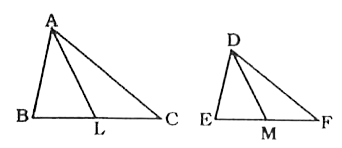In an equilateral triangle ABC, AL, BM and CN are medians. Forces along BC and BA represented by them will have a resultant represented by
2−−→AL
2−−→BM
2−−→CN
−−→AC
The correct Answer is:B
Topper's Solved these Questions
- MOTION IN A PLANE BOOK - AAKASH SERIESCHAPTER - MOTION IN A PLANE EXERCISE - Practice Exercise
84 Videos
- MOTION IN A PLANE BOOK - AAKASH SERIESCHAPTER - MOTION IN A PLANE EXERCISE - Exercise -I
91 Videos
- MECHANICAL PROPERTIES OF SOLIDSBOOK - AAKASH SERIESCHAPTER - MECHANICAL PROPERTIES OF SOLIDSEXERCISE - EXERCISE - 3
26 Videos
- MOTION IN A STRAIGHT LINEBOOK - AAKASH SERIESCHAPTER - MOTION IN A STRAIGHT LINEEXERCISE - Questions for Descriptive Answers
7 Videos
Similar Questions
Knowledge Check
In an equilateral ΔABCif AD⊥BC, then
A2AB2=3AD2B3AB2=4AD2C5AB2=6AD2D4AB2=5AD2In an equilateral triangle ABC, the side BC is trisected at D. Then the correct relation is
A9AD2=7AB2B8AD2=9AB2C7AD2=9AB2Dnone of theseIn an equilateral triangle ABC, the side BC is trisected at D. Then the correct relation is
A9AD2=7AB2B8AD2=9AB2C7AD2=9AB2DNone of these
ΔABC is an equilateral triangle and D and E are midpoints of AB and BC respectively. Then the area of ΔABC : the area of the trapezium ADEC is
View SolutionIf ABC is an equilateral triangle and D is a point on BC such that AD⊥BC, then
View SolutionA body is moved along the sides of a triangle ABC once in anticlockwise direction by applying different forces along different sides as represented in the figure . The total displacement of the body and work done by the forces are ______ and "_____ respectively.

View SolutionA body is moved along the sides of a triangle ABC once in anticlockwise direction by applying different forces along different sides as represented in the figure . The total displacement of the body and work done by the forces are ______ and "_____ respectively.

View SolutionConsider the two equiangular triangles ABC and DEF having medians as ALandDMrespectively as shown in figure below.

View Solution
